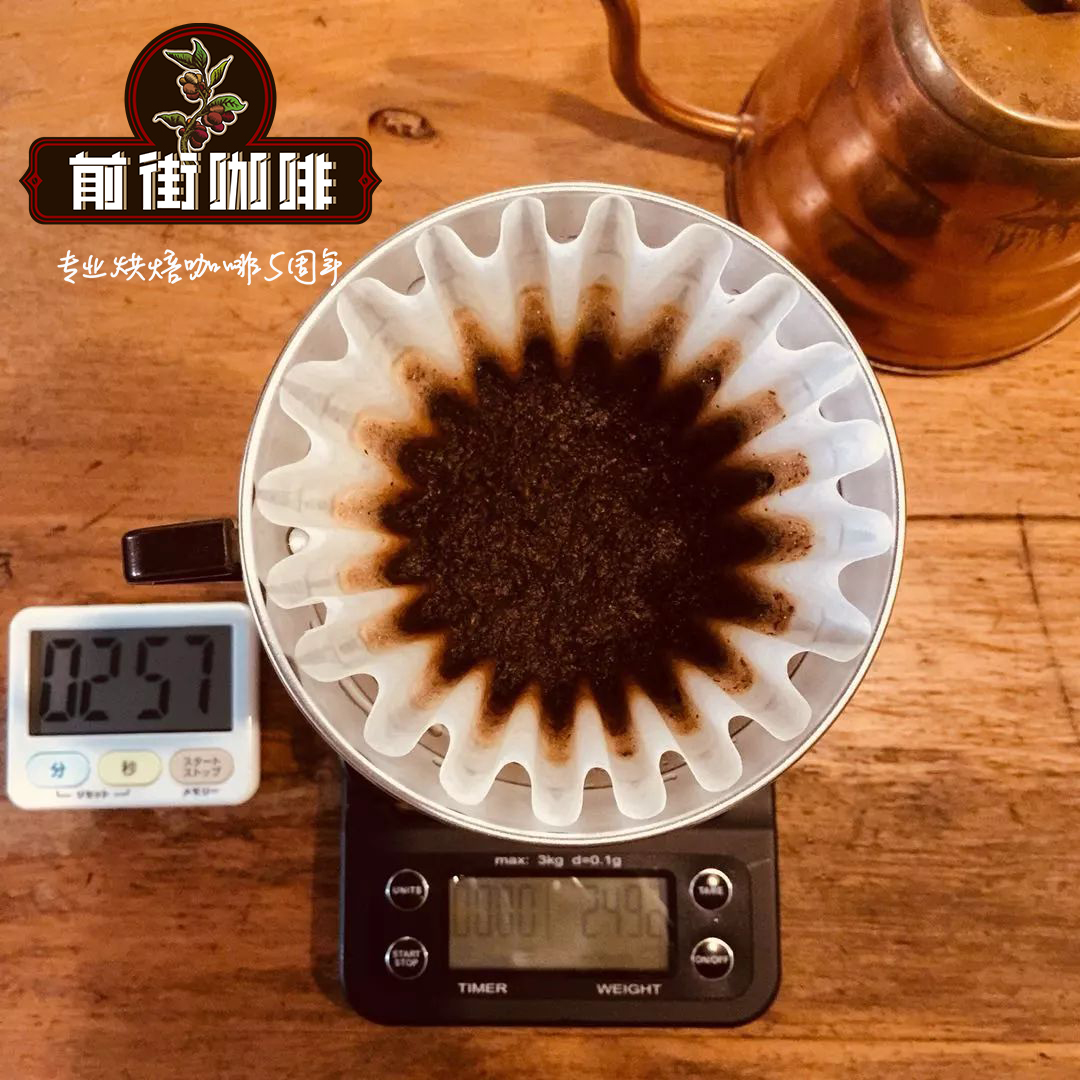What are the characteristics of Arabica Coffee? exploring the relationship between Katim and Arabica

Professional coffee knowledge exchange more coffee bean information please follow the coffee workshop (Wechat official account cafe_style)
Front Street-Arabica Coffee, Katim Coffee Coffee
Arabica (Arabica)
Planting area:
Arabica coffee beans are mainly produced in South America, Central America, Africa and Asia.
Output:
Arabica beans account for about 70% of the world's coffee output.
Several altitude differences:
Arabica's planting is more than 800 meters above sea level, and Arabica has high requirements for planting conditions. The ability to resist disease and scourge is weak.
Tasty taste:
Arabica coffee has a very low caffeine content, ranging from 0.9% to 1.2%, and is rich in fat and sugar, so it tastes soft, non-irritating, fresh and slightly sweet, and sometimes has some refreshing and pleasant sour taste. Arabica is mainly used in single or boutique coffee and is favored by most coffee lovers.
Of course, most coffee products come from "Rabbi" or "bourbon", but at the beginning, coffee is made from Ethiopia, and the Royal Plant Association of Britain has also proved that 95% of the coffee genes are from Isobi. When you see the coffee bag marked "original species", it means that the coffee may be wild or come from a rarely man-made farmland.
Timor Hybrid "Timo" hybrid
The Timo hybrid is a highly recommended coffee, because it is a natural mixture of Arabica and Jubosta, and it has a high proportion of Busta. This sex gives Timo cold resistance and the ability to resist malady, which is replaced by its poor taste and fragrance.
For this reason, this special coffee is used to graft many breeds, especially those such as "Katimo" and "Katimo". In terms of classification, "Katimo" refers to the mixture of "Kaddura" and "Timo", while "Katimo" is preferred to the mix of "Vera Mitch" and "Timo". The practical examples of these varieties include "Castille", "Costa Rica" and "Shakespeare".
Families of fine coffee often avoid mixing coffee with Timo, but some producers, especially in low-altitude areas where typhoid disease is prone to occur, think that reducing the risk of disease is more important than coffee products and coffee products.
Katim, this variety is a hybrid of Kaddura, a branch of the Bourbon line of Arabica, and a hybrid of the Burmese strain. The reason for planting this variety is that Katim has the Guibusta gene, so it is easier to resist disease than a single old product, and the output is good. Compared with the old varieties of rice, the poor yield of disease resistance is also low, so people naturally prefer the old katim species. So now Yunnan has set off a "Katim". Katim is thick and thick, and the card is thin and long. Under the same conditions, Katim is more popular than Katim, and Katim is also on the high side.
Knowledge expansion: Arabica coffee beans first came from Ethiopia, Ethiopia, Yamen and other places in Africa, and then continued to be transplanted to all parts of the world.
In short: Qianjie is a coffee research hall, happy to share the knowledge about coffee with you, we share unreservedly just to make more friends fall in love with coffee, and there will be three low-discount coffee activities every month. The reason is that Qianjie wants to make more friends drink the best coffee at the lowest price, which has been Qianjie's tenet for 6 years!
END
Important Notice :
前街咖啡 FrontStreet Coffee has moved to new addredd:
FrontStreet Coffee Address: 315,Donghua East Road,GuangZhou
Tel:020 38364473
- Prev

Relationship between Arabica Coffee Bean and Blue Mountain Coffee Bean
Professional coffee knowledge exchange more coffee bean information please follow the coffee workshop (Wechat official account cafe_style) front street-Arabica Coffee, Blue Mountain Coffee brief introduction the first is Arabica beans, the world-famous Blue Mountain Coffee, Mocha Coffee, etc., almost all Arabica species. The other is the Robasta species.
- Next

One of the varieties of Arabica coffee is iron card coffee, which inherits its flavor gene.
Professional coffee knowledge exchange more coffee bean information please follow the front street of coffee workshop (Wechat official account cafe_style)-Arabica coffee and pickup coffee are common shrubs of Rubiaceae coffee. There are about 40 species of plants under the coffee tree branch, of which there are only three kinds of coffee with commercial value-- Coffea Arabica and Arabica.
Related
- Beginners will see the "Coffee pull flower" guide!
- What is the difference between ice blog purified milk and ordinary milk coffee?
- Why is the Philippines the largest producer of crops in Liberia?
- For coffee extraction, should the fine powder be retained?
- How does extracted espresso fill pressed powder? How much strength does it take to press the powder?
- How to make jasmine cold extract coffee? Is the jasmine + latte good?
- Will this little toy really make the coffee taste better? How does Lily Drip affect coffee extraction?
- Will the action of slapping the filter cup also affect coffee extraction?
- What's the difference between powder-to-water ratio and powder-to-liquid ratio?
- What is the Ethiopian local species? What does it have to do with Heirloom native species?

